It had been the year 2010 since I'd flown in or out of Long Beach Airport—LA's oldest municipal airport, originally known as Daugherty Field, established in 1923.
It's just not convenient to where I currently live.
But I love it so much, I arranged to tour its Streamline Moderne-style terminal building (by architects William Horace Austin and Kenneth Smith Wing, circa 1941) back in 2016.
And then in February 2023, it ceased operations as LGB's main passenger terminal and closed for a renovation that would last over a year. At the time, I thought, "Aw, too bad"—because it had been such a delight to travel through there, I was sad for the passengers who'd never get to experience it.

It's currently being converted into a rental car center (the rental car companies currently operate out of a temporary-looking trailer next to Parking Structure A)...
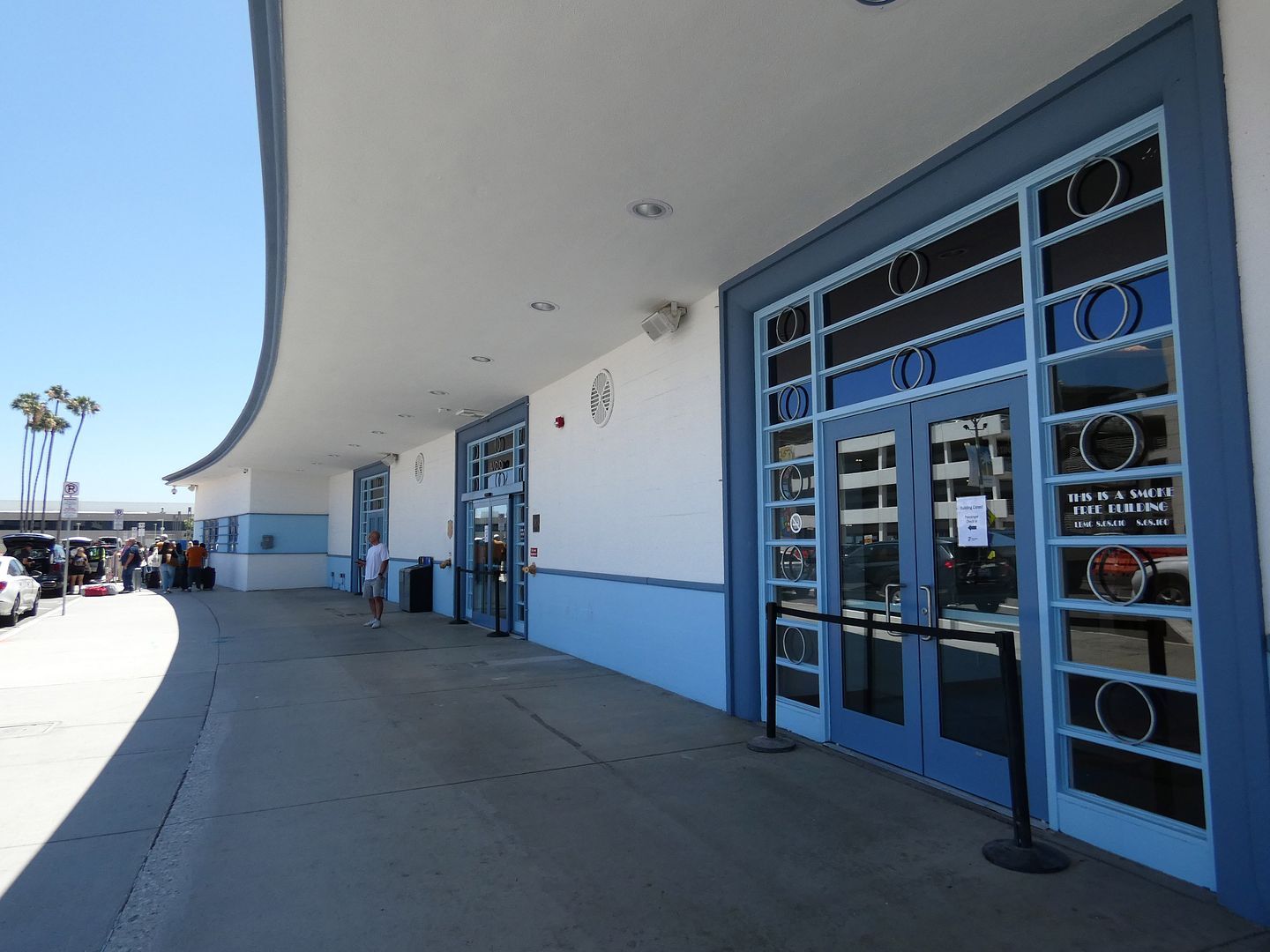
...but the bulk of the restoration is done, so it celebrated its grand reopening last weekend with an open house.
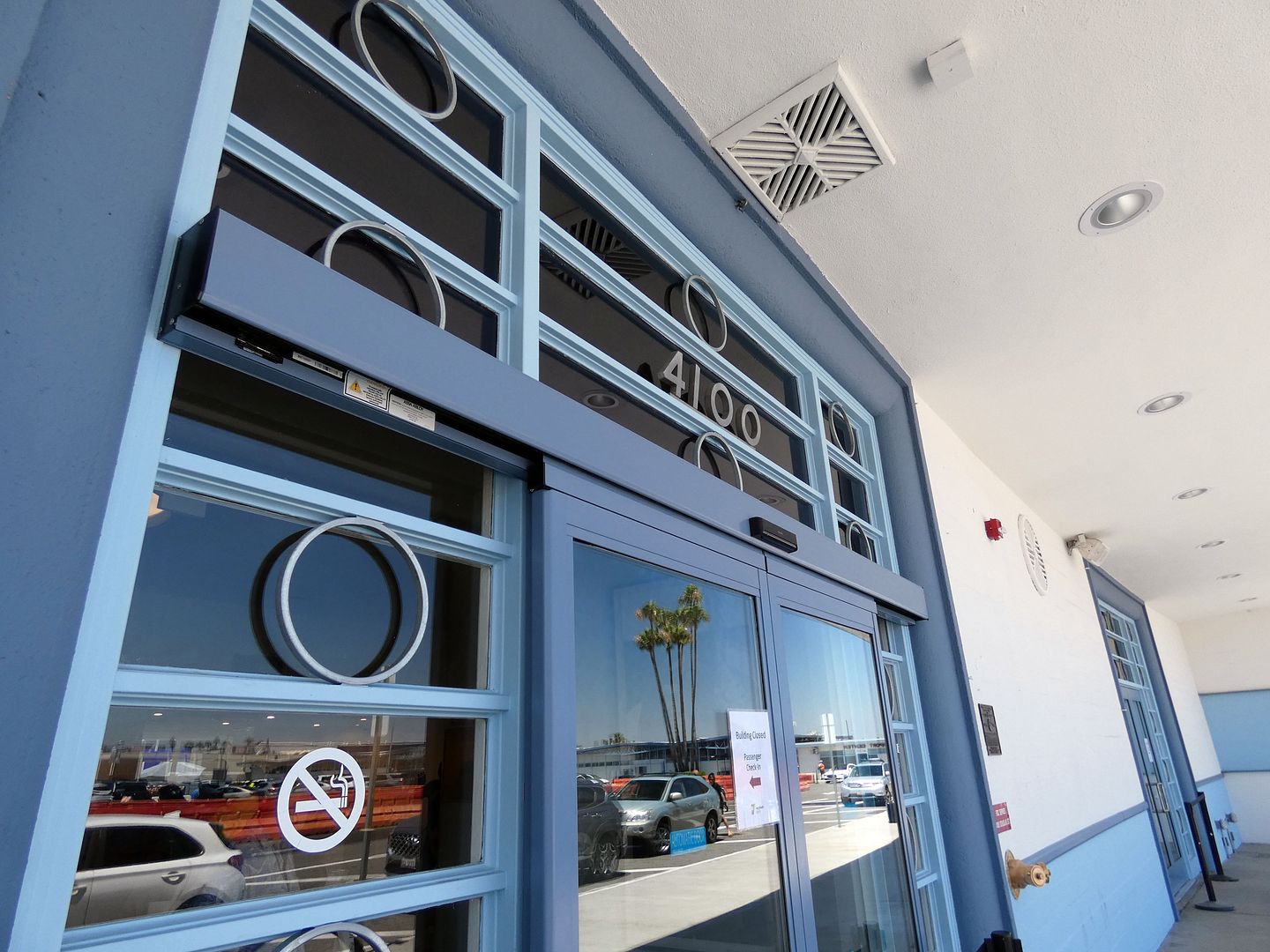
Of course I had to go.
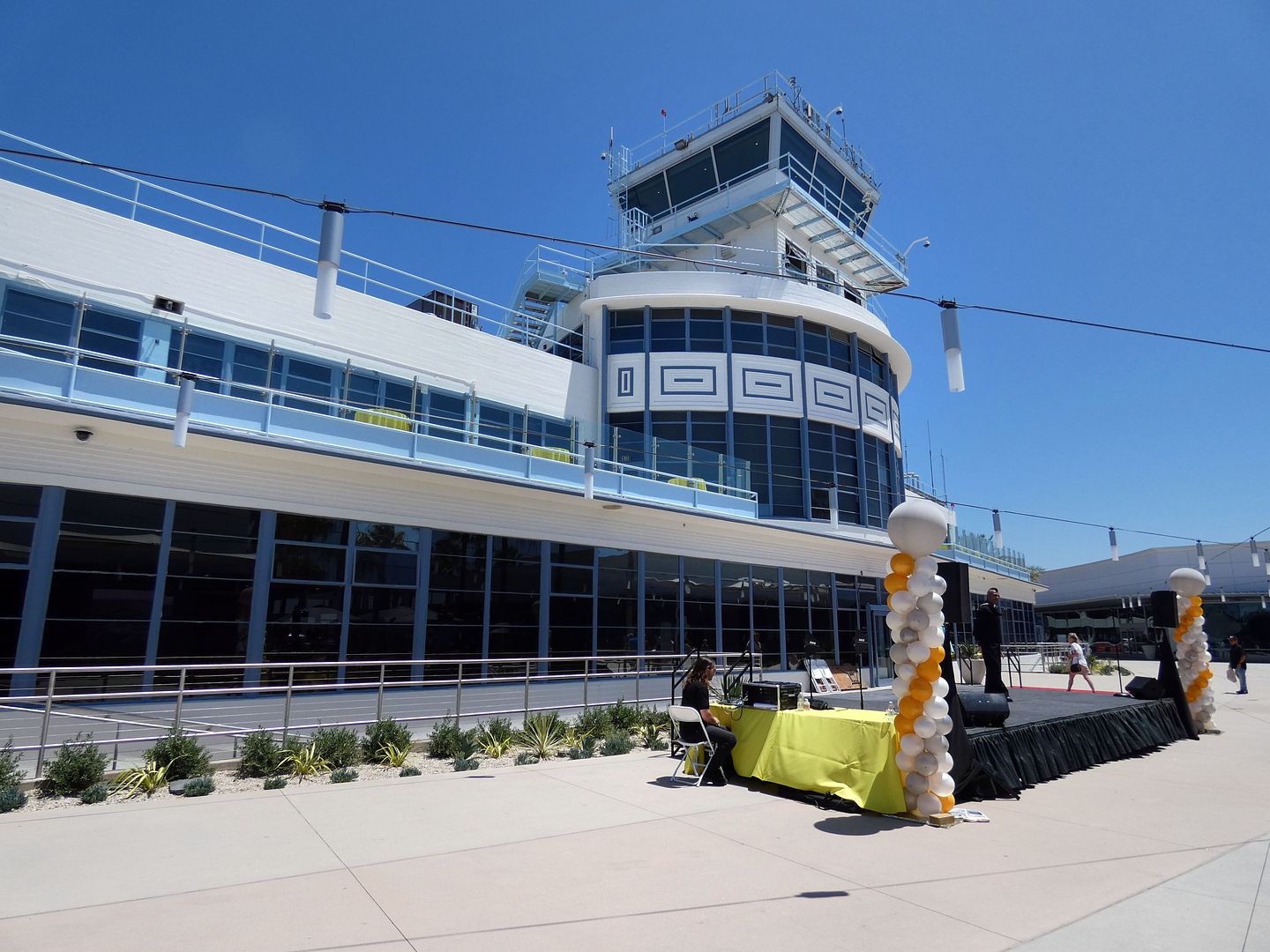
I knew with official flight operations having been moved to a new terminal, I'd be able to get some photos I couldn't get the last time around—despite having been on a guided tour (but still having to work around all the ticketed passengers and staff and security).
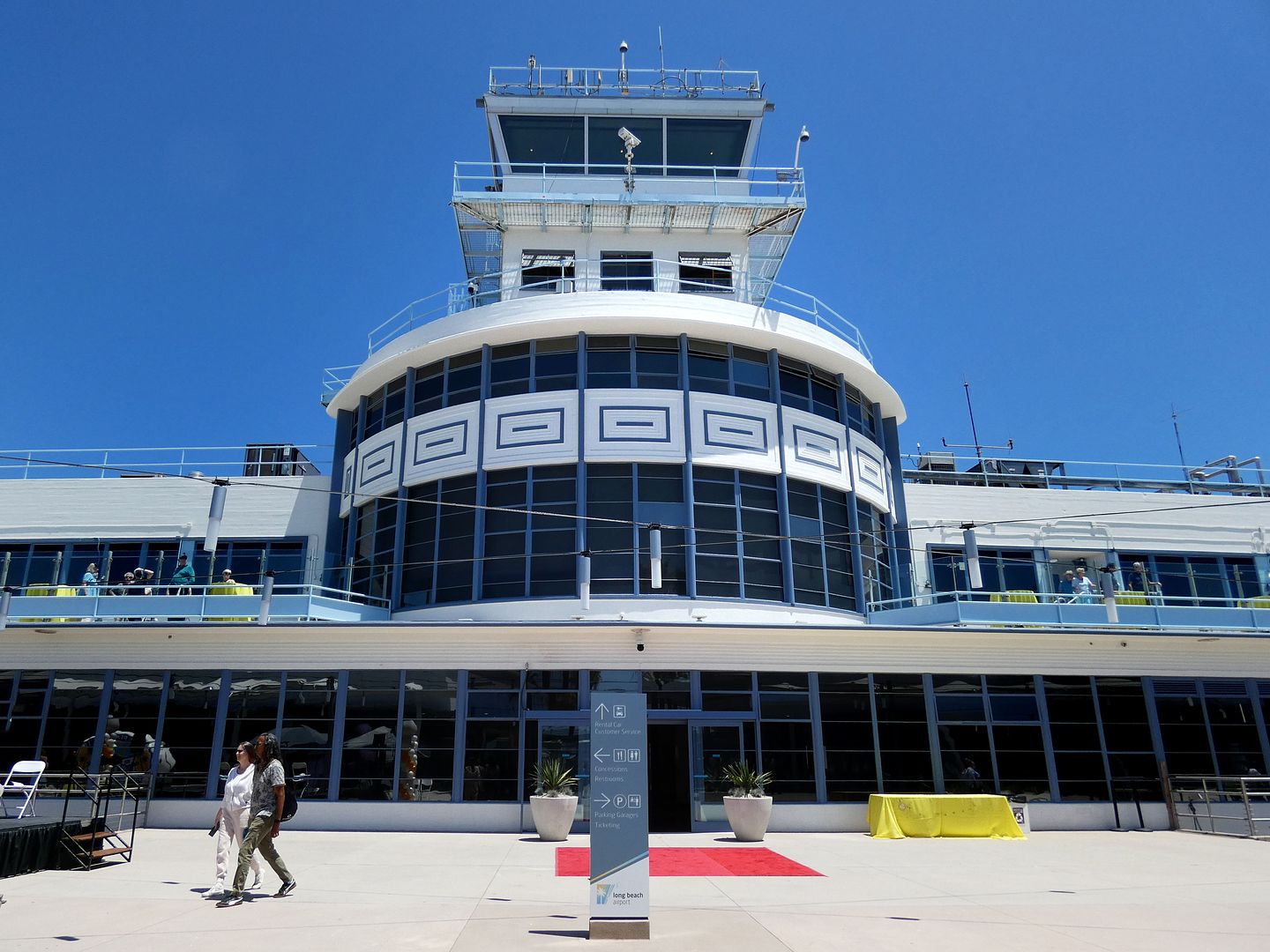
The West Entrance, for instance, had been closed for decades and is once again open to take in the spectacular view of the terminal's upper level and control tower (which look a bit like a ship and its crow's nest).
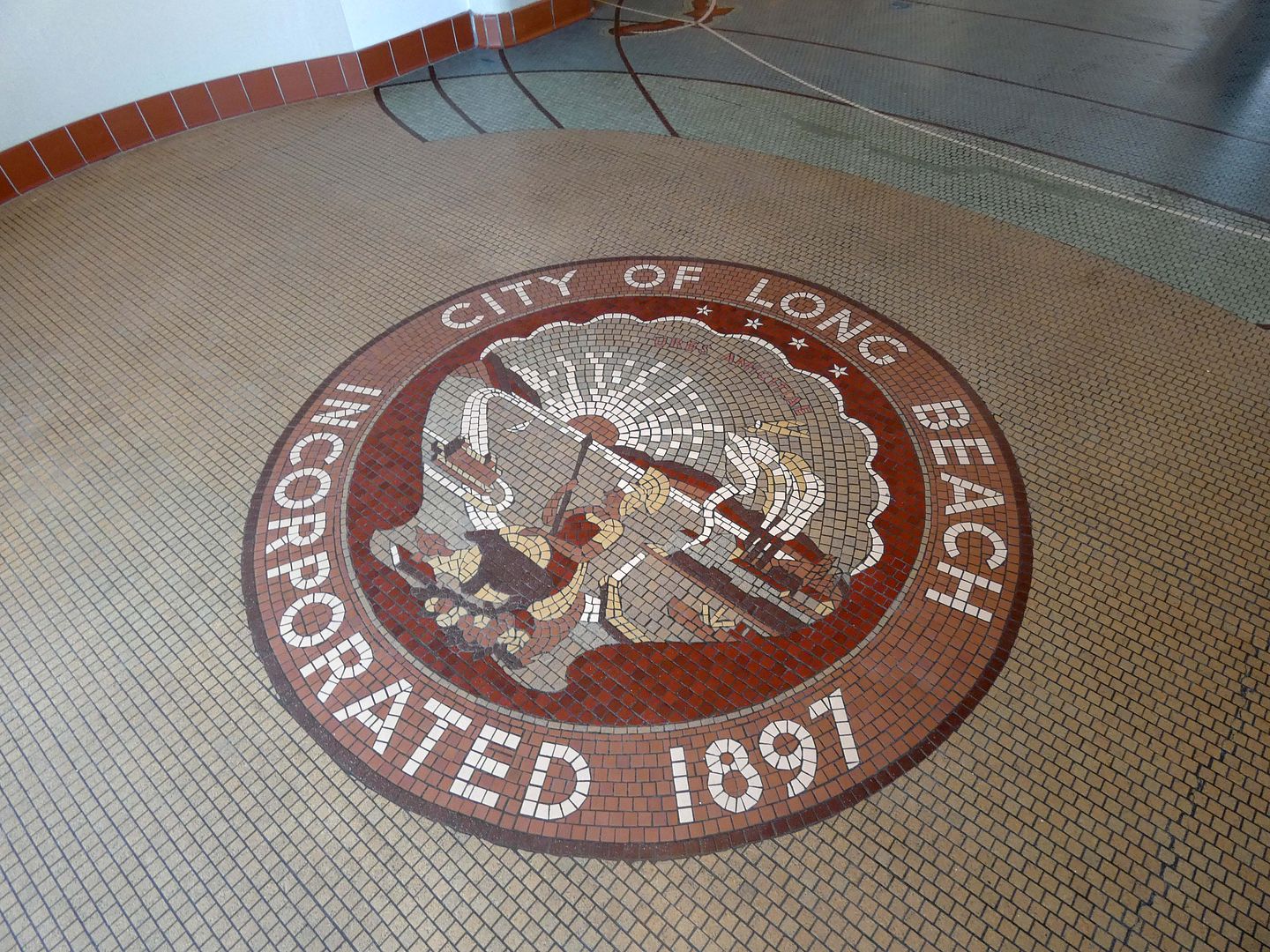
The highlight back then was the mosaic ceramic tile floor murals, which had spent decades hiding under carpeting. Six of the nine murals were uncovered in 2012.

And they're still the pièce de resistance—perhaps now more than ever, especially since you can see them even better without all that foot traffic, those stanchions, and the ticketing windows.

Designed as part of the Works Progress Administration (WPA) by mosaicist Grace Clements, and known collectively as "Communication (Aviation and Navigation)," they feature 1.6 million hand-cut tiles...

...in designs evoking both travel and the local culture of Long Beach as a port city...
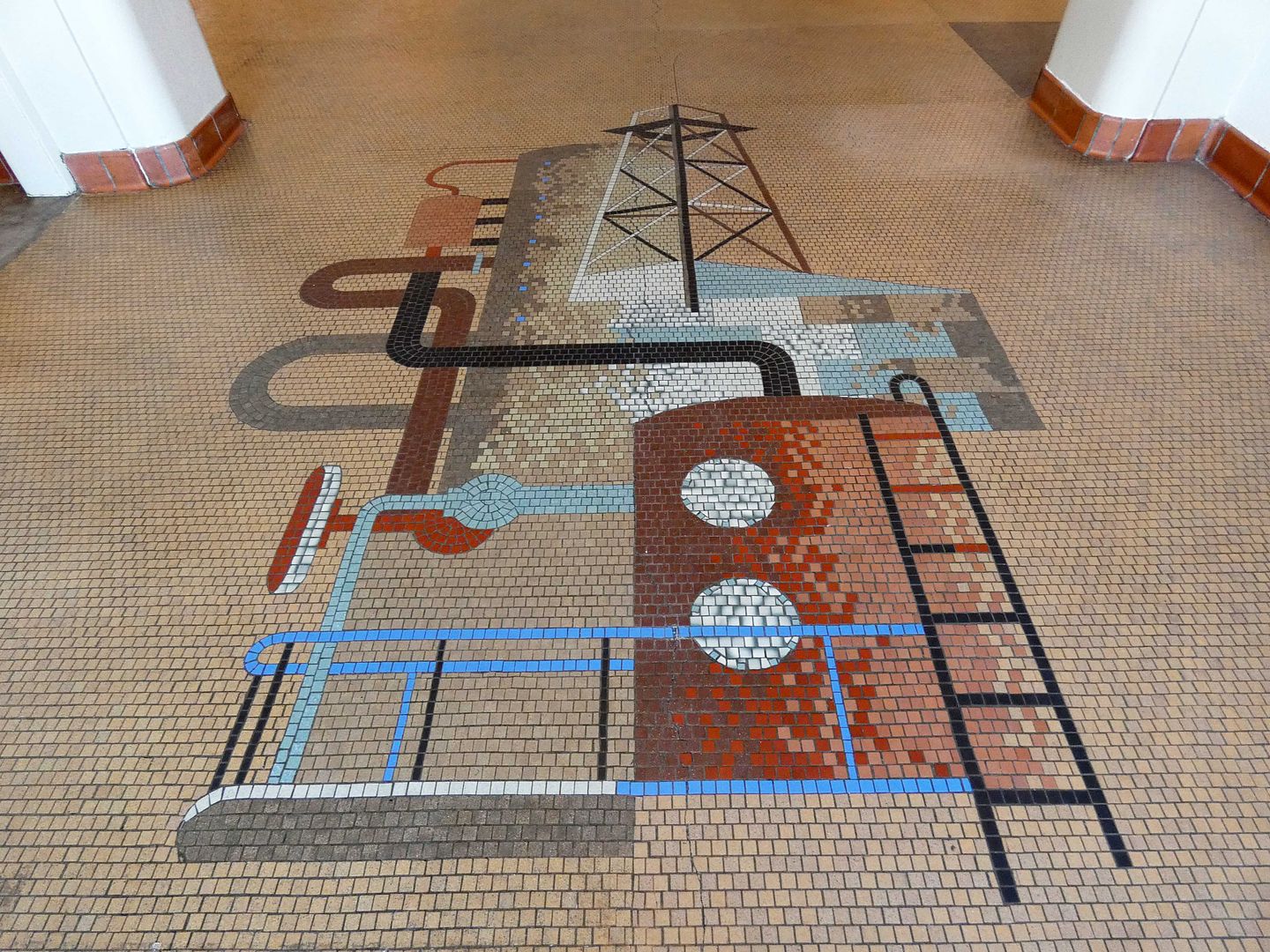
...an oil city...
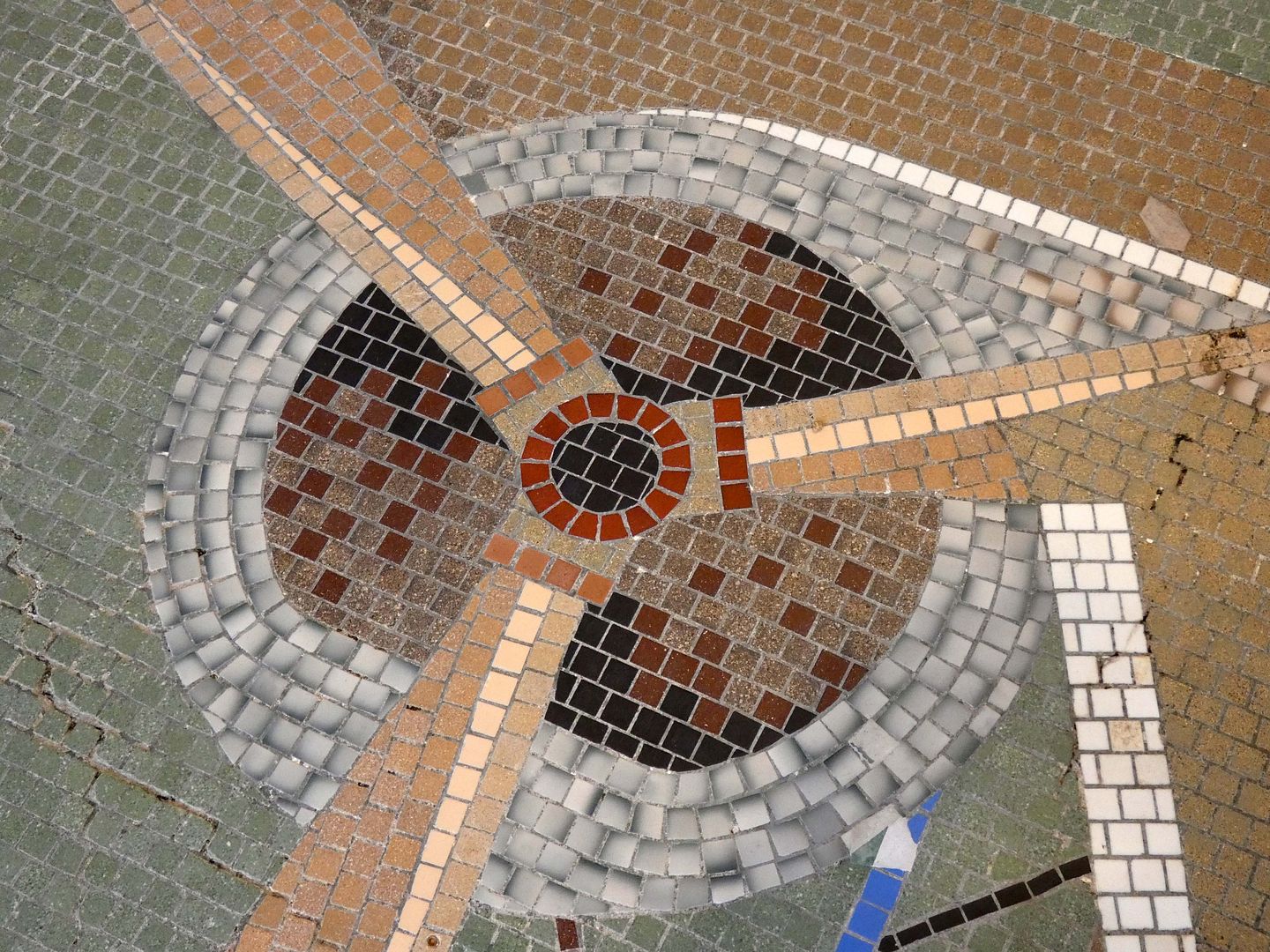
...and a center of aviation, as reflected in the design of a propeller plane that was one of the three mosaics that had remained hidden since 2012.
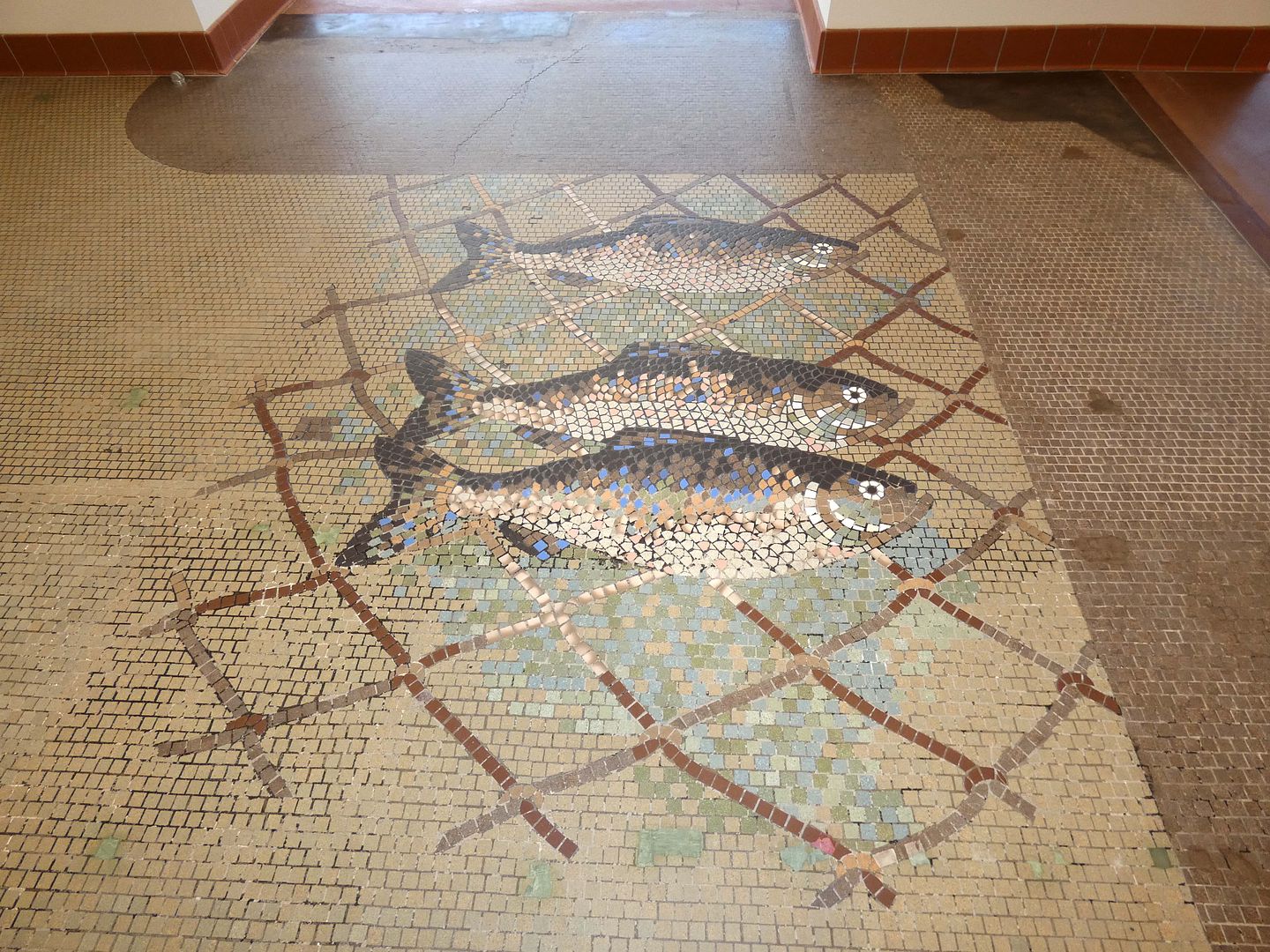
Some fish mosaics are also newly revealed in this latest restoration, as is a sailboat (which I somehow missed during my visit).
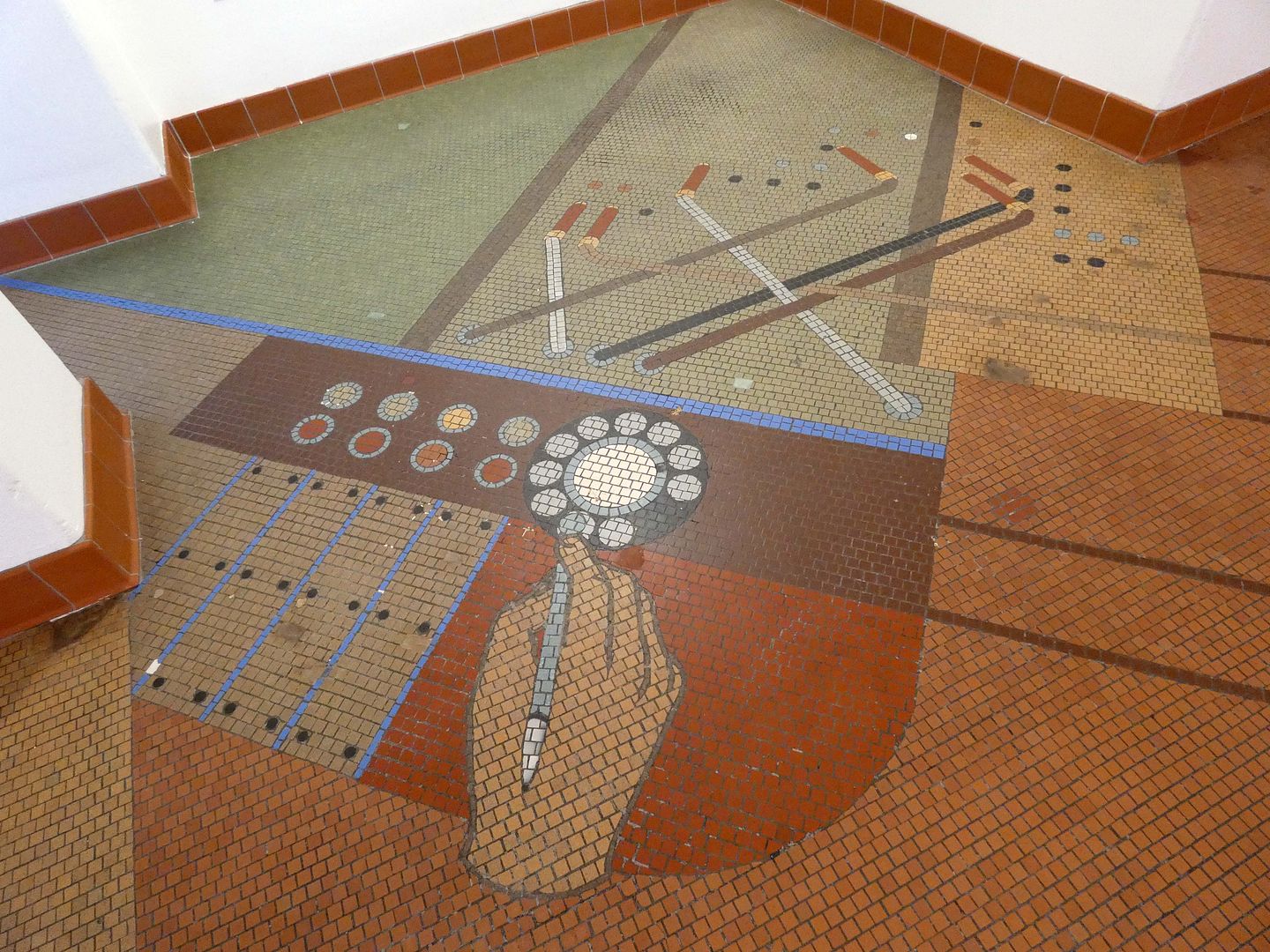
Among the mosaics I hadn't spotted the last time around (or, at least, don't recall and didn't photograph) include those of a rotary phone...
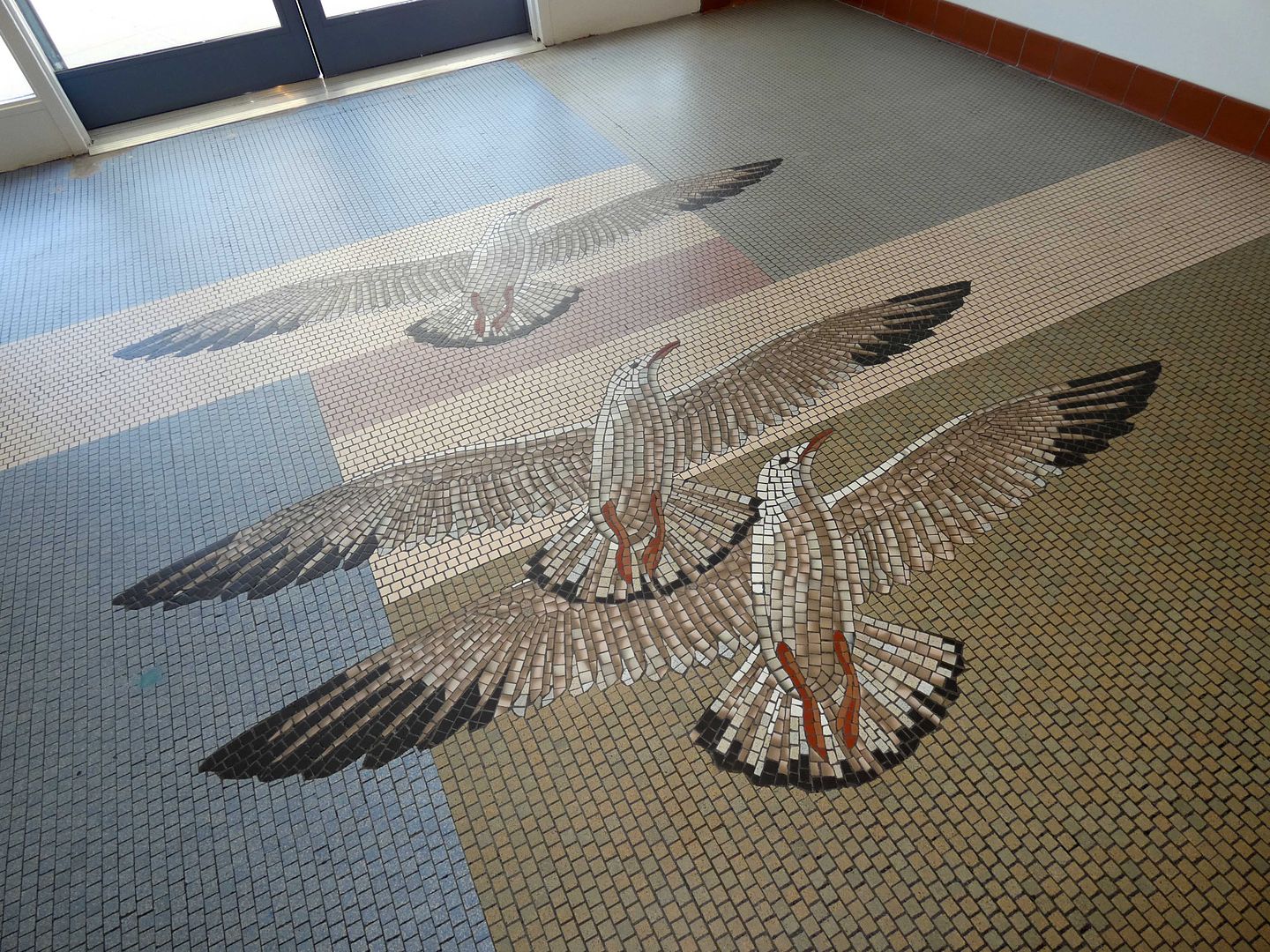
...and a literal flock of seagulls.
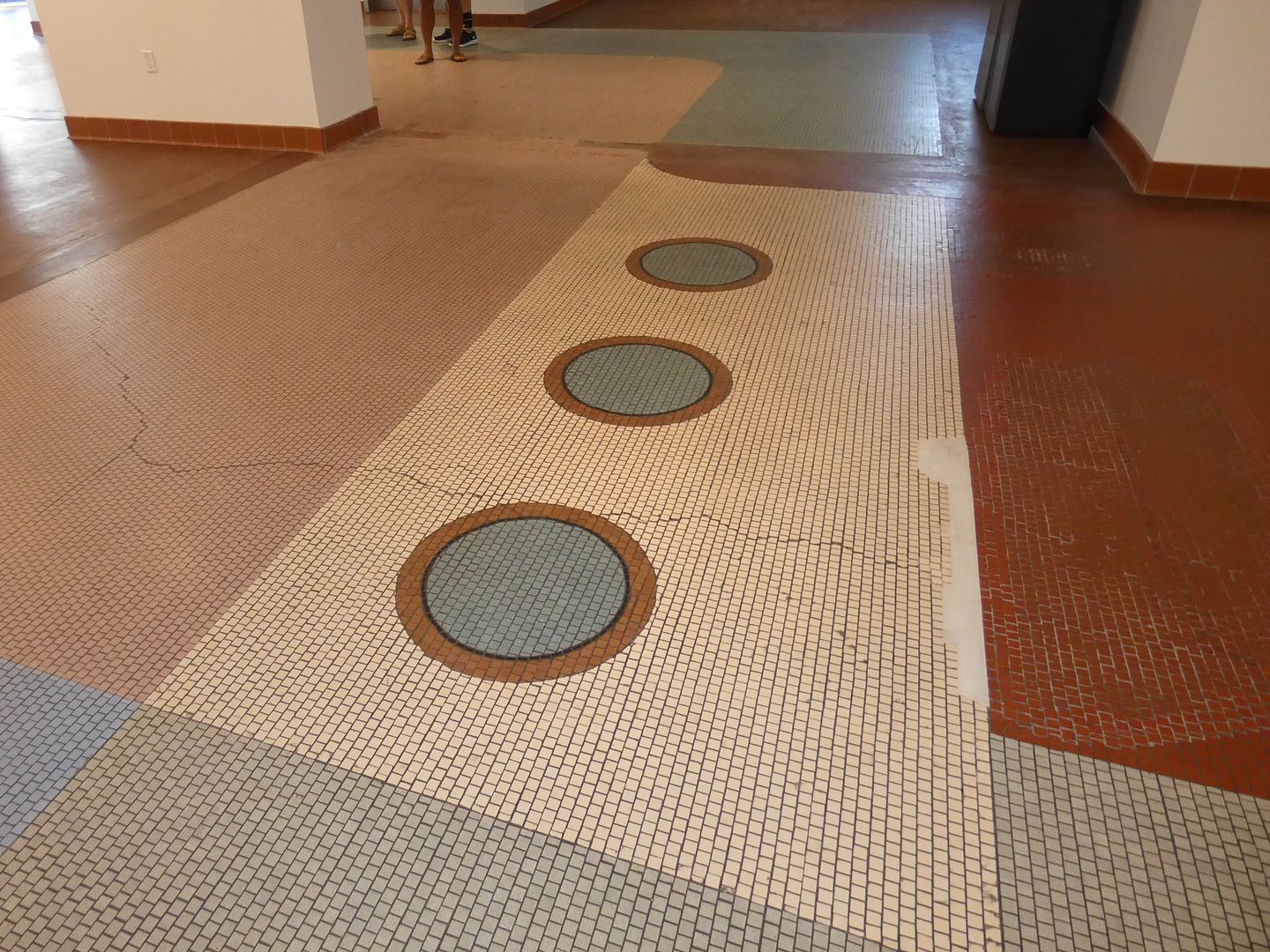

I like that they've been cleaned and stabilized but you can still see the wear and tear on them. I think they should show their history, like wrinkles on a face or scars on a knee. (Imagine what poor condition they'd be in if they hadn't been protected by carpeting all those years!)
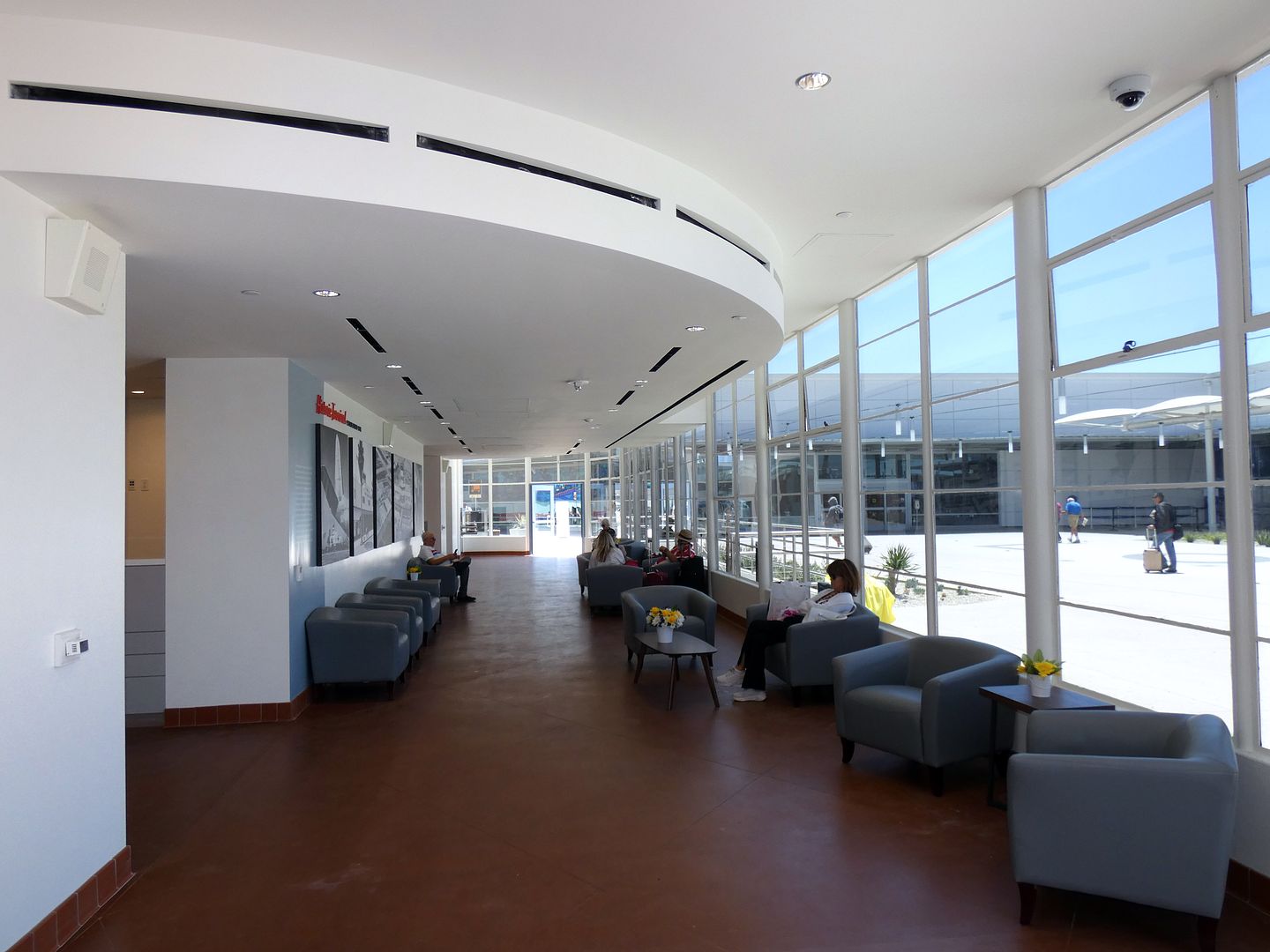
The newly-redesigned ground floor now also pays tribute to the terminal's aviation history with a new photographic display...
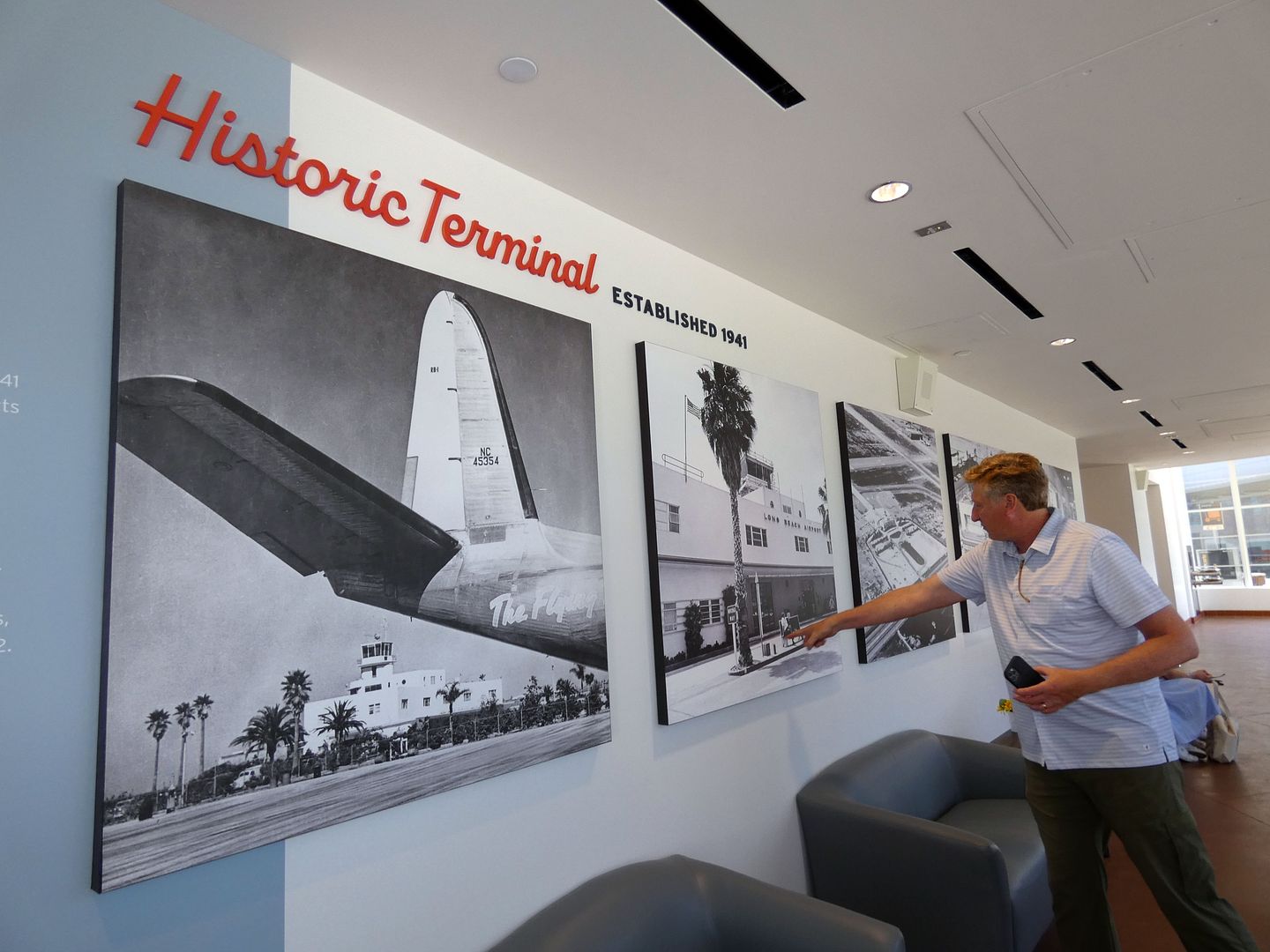
...which you'll be able to peruse even if you're not renting a car. 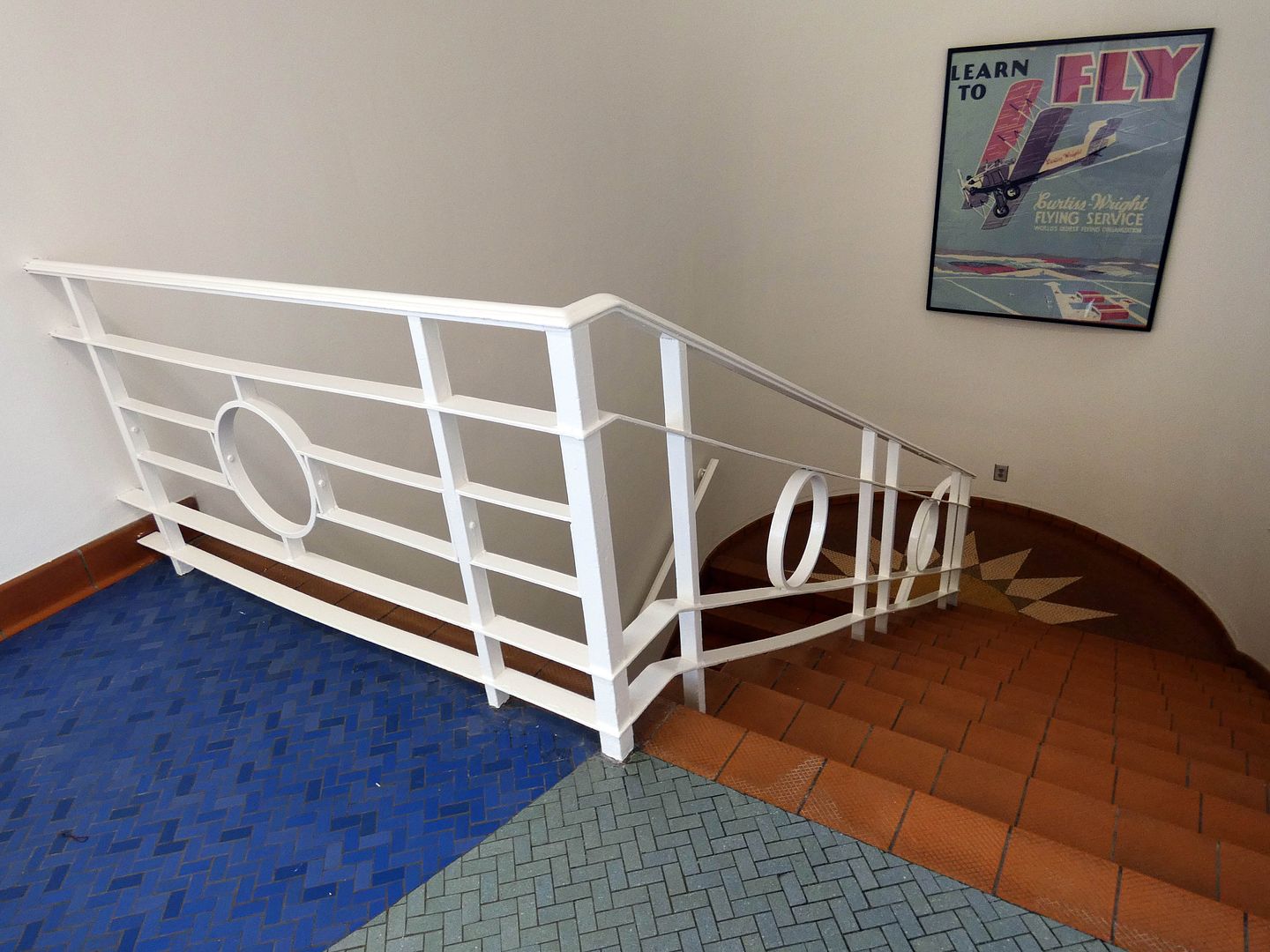
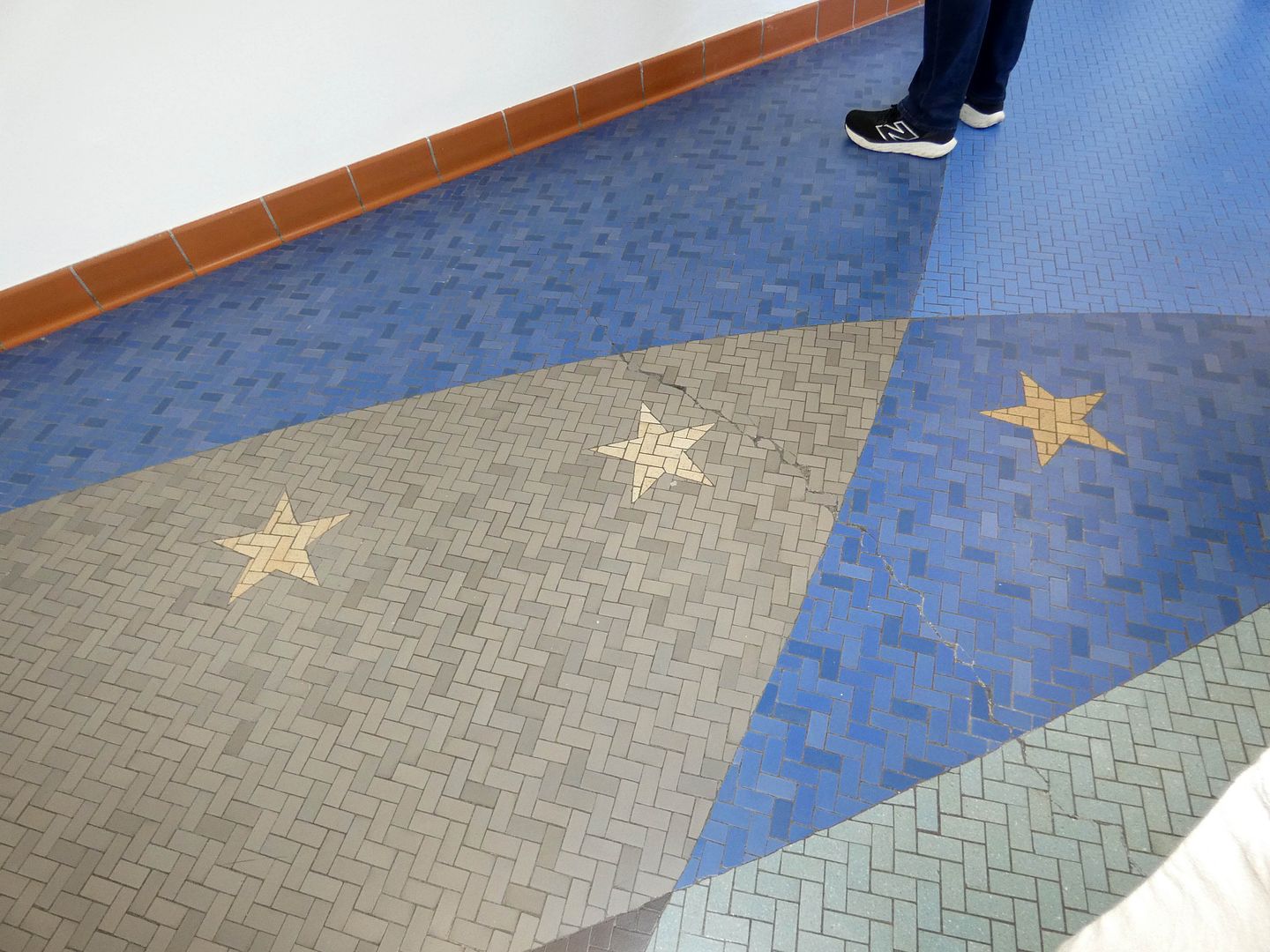
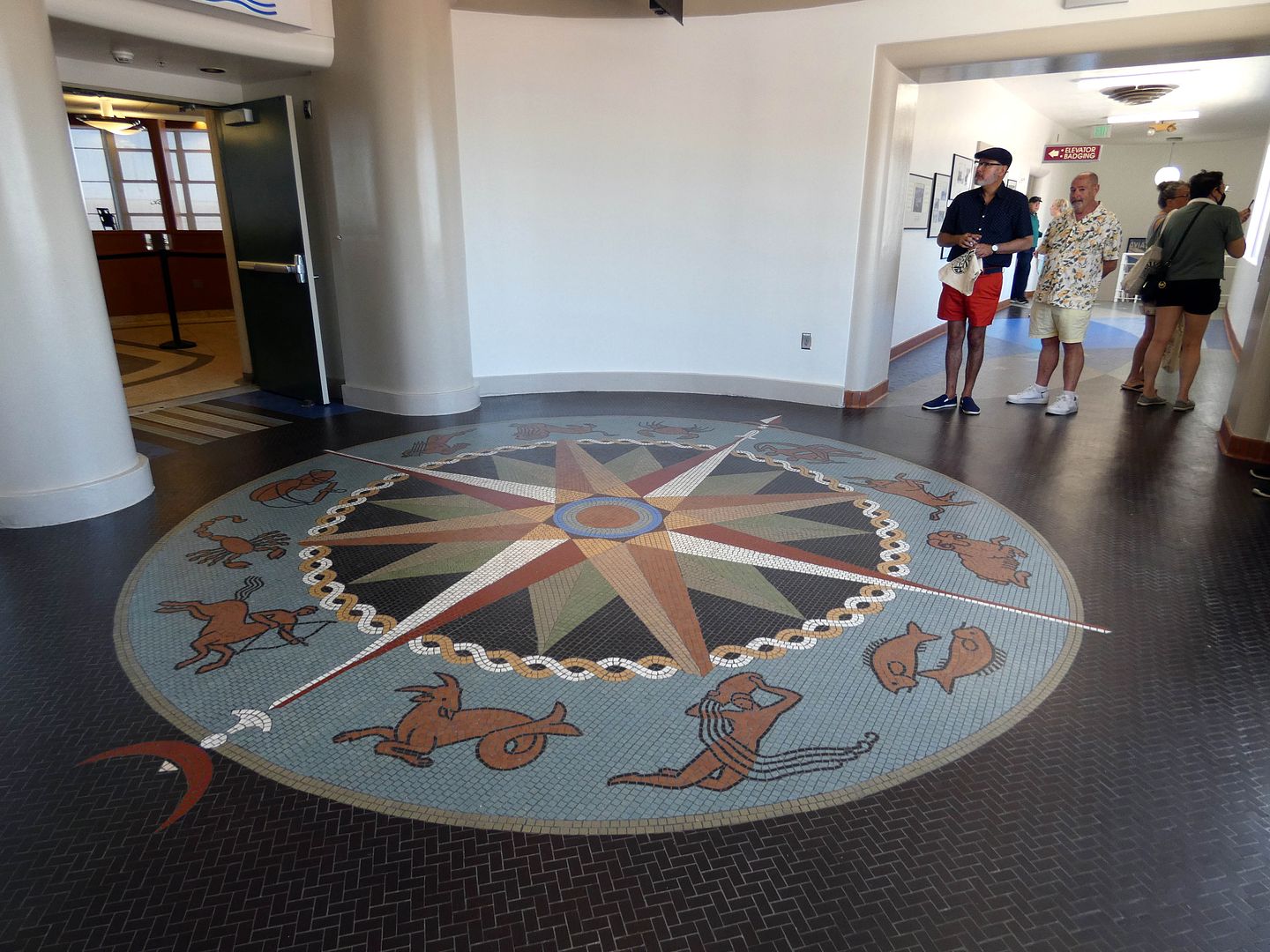
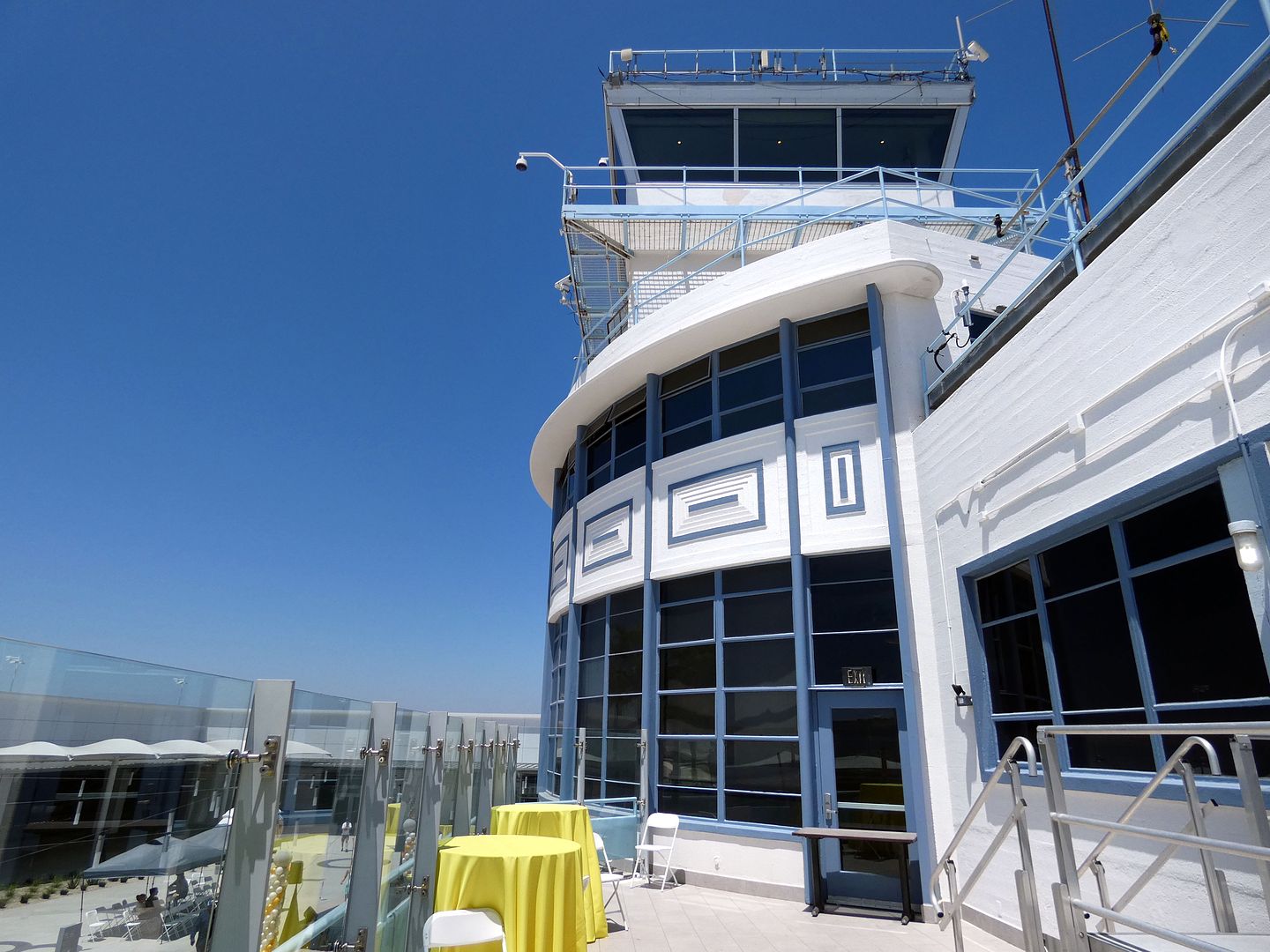

The tiles—and history—continue up on the second floor, which used to be where you could hang out in the airport's restaurant for hours if you missed your flight (which I, in fact, did once).

Clements' designs upstairs are more generally suggestive of aviation upstairs, with starbursts and five-pointed stars on an abstraction of the night sky...

...leading to the centerpiece compass rose, surrounded by symbols of the zodiac.

From there, you can step out onto the observation deck and watch some planes take off and land—or get an even closer look at that stunning architecture of the control tower.
At the grand reopening ceremony, Long Beach Mayor Rex Richardson explained that the historic terminal never really got a proper grand opening, as it was scheduled to debut on December 8, 1941. But those plans were put on hold in light of the attack on Pearl Harbor the day before—and the Army actually commandeered the building for the war effort, hence the airport's close association with "Rosie the Riveters."
Although WWII was still in full swing, the building finally began serving its original purpose as a passenger terminal in 1942—but without much fanfare.
So, as Long Beach Airport continues to celebrate its centennial (which it began in November 2023), it took the opportunity to make up a little bit for lost time.
Related Posts:

No comments:
Post a Comment